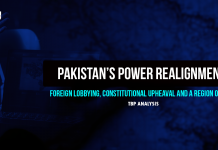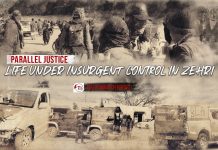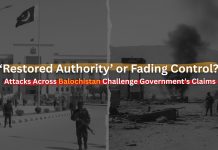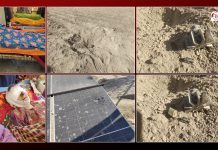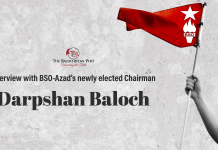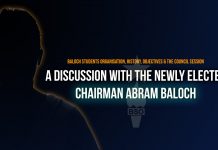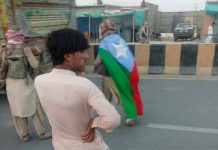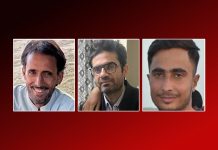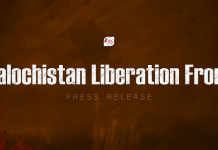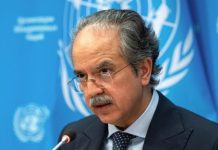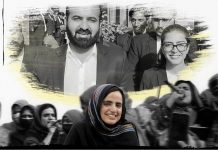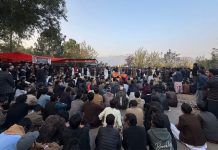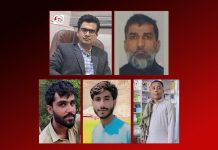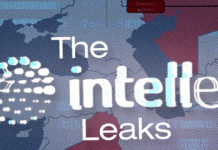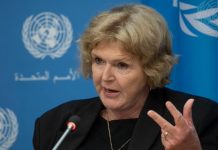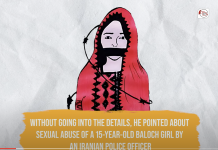Author: Dur Bibi
Following the Baloch Liberation Army’s (BLA) attack on August 26th, reports emerged that the BLA had killed 27 “Punjabis” based on their ethnicity. These individuals were laborers traveling to Balochistan for work when the BLA’s “terrorists” allegedly targeted them solely because they were Punjabi. This narrative was quickly promoted by the state and even by some “comrades” who are typically outspoken against state atrocities and advocate for justice.
However, the BLA contested this narrative, stating that the killings were not ethnically motivated. Instead, they argued that the individuals were targeted due to their affiliations with state forces and the establishment.
What Actually Happened?
The Baloch Liberation Army initiated an operation called “Heroof” (meaning “the black storm” in Baluchi) on August 25th. During the night of August 25th and into the day of August 26th, the BLA launched a series of attacks on multiple government installations, including police stations and security force camps across the province.
Initial reports from Bela, Turbat, Gwadar, Mastung, Bolan, Kalat, Quetta, Naseerabad, and Koh-e-Sulaiman indicated the sounds of explosions and gunfire. It was also reported that the BLA had blockaded the main highways of Balochistan. During this operation, the BLA’s suicide unit, Majeed Brigade, managed to infiltrate and attack the main Pakistani military camp in Bela. Local sources reported that Bela was engulfed in flames, with explosions heard throughout the night. However, government officials did not release any official statements regarding the incident in Bela.
Social Media and Official Responses:
On social media, the BLA released a statement explaining their actions. They stated that during road blockades under “Operation Heroof,” the BLA searched passenger buses. They claimed that several individuals were found carrying service cards from the occupying Pakistani army, intelligence agencies, and Frontier Corps. These individuals were reportedly returning to military camps in Balochistan after spending their holidays. After being fully identified, they were sentenced to death on charges of infiltration. According to the BLA, the 27 people killed were suspects tied to the state, not targeted due to their ethnicity. However, a significant debate erupted on social media, with many asserting that the killings were ethnically motivated.
In response, government officials and social media activists began pushing on revenge, The Balochistan government has stated that “revenge will be taken against the murderers of innocent citizens.”
Following the attacks and security forces’ actions, Balochistan’s Chief Minister Sarfraz Bugti told journalists that “revenge will be taken against the murderers of innocent citizens, and they will be given a fitting punishment according to the law.”
Despite the ongoing “Azm-I-Istehkam” operation in Balochistan and Khyber Pakhtunkhwa. According to Dawn, “Pakistan has a long history of counter-terrorism operations, with numerous campaigns launched since 2007.”
The years of military operations in Balochistan and Khyber Pakhtunkhwa, peace remains elusive, and the situation continues to deteriorate. After the BLA’s Heroof operation, the Prime Minister and other government officials announced plans for a “decisive operation.” Journalists and social media activists have largely supported this move.
The Broader Implications:
But what will another military operation bring? More hatred, more repression, and more targets? There is always a political solution available, yet the state of Pakistan repeatedly chooses military force over political dialogue. This approach is reminiscent of General Musharraf’s decision to kill Akbar Khan Bugti rather than seek a peaceful resolution.
Mahrang, who went to Islamabad to seek justice, was met with state rejection. On December 22, 2023, when the protesters arrived in Islamabad, the world witnessed their plight. Women and children were subjected to baton charges, water cannons were used, and 290 protesters were arrested. This was the state’s response to a peaceful protest. Meanwhile, then-caretaker Prime Minister Anwar ul-Haq Kakar suggested in a press conference that those morally or financially supporting the Baloch protesters in Islamabad should join the Baloch militants and labeled the families of missing persons as terrorist supporters. This was a distressing and embarrassing act by the government.
Just a few days ago in Gwadar, the state once again resorted to violence—opening fire, arresting, and harassing hundreds of protesters. Will this repression bring peace, or will it only deepen the hatred? And during the repression and more oppression in the name of military solution against terrorism?
Ehsan Ghani, the former coordinator of the National Counter Terrorism Authority, believes that “to find a solution to any problem, the first thing you need is to understand the problem.”
Dr. Mehwish Ahmed, an Assistant Professor at the London School of Economics, also seems to agree with Ehsan Ghani. She told the BBC that there is no “military solution” to the problem of extremism in Balochistan.
According to her, “We need to think about why people are joining armed organizations. When people are forcibly disappeared and mutilated bodies are found, these organizations will no longer need to run recruitment campaigns to attract new members.”
Another argument emerging on social media is that the state should invite international media to Balochistan for fair investigations and solutions. International media is present in conflict zones such as Palestine, Ukraine, and Myanmar, so why not in Balochistan? Baloch nationalists have long called for international media involvement, and now independent voices from Pakistan are echoing this demand. Given this, why doesn’t the state consider engaging international media instead of fueling hatred on social media between Baloch and Punjabi activists?
Disclaimer: The views and opinions expressed in this article are those of the author and do not necessarily reflect the official policy or position of The Balochistan Post or any of its editors.

